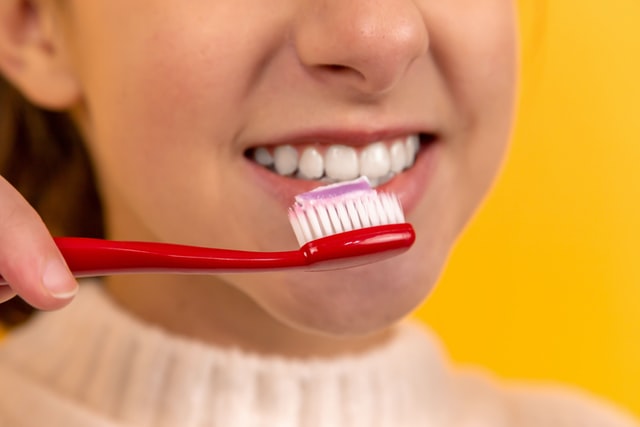One of the most important parts of your dental routine is daily brushing and flossing your teeth. The method you use makes a difference in how clean you are getting your teeth, in between your teeth, and your gums. Brushing and flossing properly minimize the risk of tooth decay and gum disease, which are the major causes of tooth loss. In this article, we go over the steps to most effectively brush and floss and ensure you are getting the full benefit of your dental routine.

The ADA Recommendation
The American Dental Association recommends that you follow this routine in caring for your teeth:
- Brush your teeth twice a day with a soft-bristled brush. The size and shape of your brush should fit your mouth so you can reach all areas easily.
- Replace your brush every three or four months, or sooner if the bristles are frayed. A worn-out toothbrush doesn’t do a very good job of cleaning your teeth.
- Make sure to use a fluoride toothpaste that is accepted by the ADA.
Steps for Brushing Correctly
Spend at least two minutes twice a day using this brushing technique, which includes 30 seconds brushing each section of your mouth (upper right, upper left, lower right, and lower left). It may be helpful to have a clock nearby so you can be sure you are brushing long enough. Pay attention to the proper way to hold your brush.
- Place your toothbrush at a 45-degree angle to the gum line.
- Don’t use a lot of pressure, just enough to feel the bristles against your gums and between teeth.
- Start with the outer and inner surfaces, using short, circular strokes and a scrubbing motion and include the gum line. Be sure to reach the back teeth.
- Move on to the chewing surfaces, holding the brush flat. Brush using up-and-down strokes.
- At the inside surfaces of your front teeth, tilt the brush vertically and use gentle up-and-down strokes with the tip of the brush. Brush gently along the gum line.
- Don’t forget to also brush your tongue, using a back-to-front motion to remove food particles and help remove odor-causing bacteria.
Steps for Flossing Correctly
The big question is whether to floss before brushing or after brushing. In 2018, there was a study reported in The Journal of Periodontology that suggested flossing first is beneficial. Flossing first led to a reduction in total plaque and an increase in fluoride concentration between teeth.
- Use about 18 inches of floss so you can have a clean piece to use on each tooth.
- Hold the floss tightly and wind most of the floss around one of your middle fingers and wind the rest around the same finger on the other hand.
- Curve the floss into a C-shape and slide it up and down along the side of each tooth. You will feel resistance when the floss reaches the gum line. Don’t force it, be gentle.
- Hold the floss against each tooth, gently scraping the tooth’s side while moving the floss away from the gum. Repeat on all teeth.
- If you haven’t flossed recently, your gums may feel sore or even bleed. Keep it up! After a few days, you will remove the built-up bacteria and your gums will feel good.
After Flossing and Brushing
After you have flossed and brushed, rinse to remove any loosened plaque and food particles. If your dentist has recommended a certain mouth wash, be sure to use it. This further helps to clean and protect the gums, teeth, and tongue.
Schedule a Cleaning with Your Family Dentist
To keep your teeth healthy, in addition to properly brushing and flossing your teeth twice a day, it’s important to make an appointment for a check-up and cleaning. Your dentist can see if you have any issues and create a treatment plan that addresses them. By maintaining your dental health routine and getting regular checkups, you can make sure you are staying on top of keeping your teeth healthy.
If you are looking for a dentist in Cary or Holly Springs, contact us. We take a wide variety of insurance plans and are currently accepting new patients. You can reach us at our Holly Springs dentist at (919) 600-6262 and our Cary, NC dentist office at (919) 467-2203. Or, you can also fill out our contact form to schedule an appointment.

